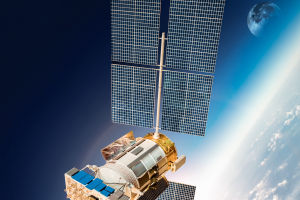Rocket launches are among the most awe-inspiring events in science and technology.
Watching a rocket blast off from Earth and soar into the vastness of space is a mesmerizing spectacle, but behind this dramatic event lies a wealth of complex scientific principles.
What Powers a Rocket?
The basic principle that drives a rocket is Newton's Third Law of Motion: "For every action, there is an equal and opposite reaction." This means that when a rocket's engines expel fuel at high speeds out of the nozzle, the rocket is pushed in the opposite direction—upwards. The force from the engines is so powerful that it overcomes Earth's gravitational pull, enabling the rocket to launch into space.
Rockets use chemical propulsion to produce this force. The rocket's fuel is mixed with an oxidizer to create a chemical reaction that produces a huge amount of gas. This gas is expelled through a nozzle, which converts the thermal energy into kinetic energy, propelling the rocket forward.
How Do Rockets Overcome Earth's Gravity?
Earth's gravity pulls everything towards the ground, so a rocket needs a tremendous amount of force to overcome this pull. This is why rockets are designed with such massive engines. They need to produce enough to push the rocket through the atmosphere and into space, which is roughly 62 miles (100 kilometers) above the Earth's surface.
As a rocket ascends, it faces not only gravity but also air resistance, or drag, which slows it down. The rocket must maintain a high velocity to reach the speed necessary to escape the pull of Earth's gravity. This is known as the escape velocity—around 25,000 miles per hour (40,000 km/h).
The Stages of a Rocket Launch
Most rockets are not a single, solid structure. Instead, they are built with multiple stages, each designed to perform a specific function during the launch. The first stage provides the initial to lift the rocket off the ground. Once it has used up its fuel, it detaches and falls back to Earth, while the second stage kicks in to continue the ascent.
Each stage is optimized for different parts of the launch. For example, the first stage deals with the thick lower atmosphere, where the air is denser, while the second stage takes over when the rocket is in thinner, higher-altitude air. Some rockets even have a third stage for precise placement into orbit.
The Role of Rocket Guidance Systems
Once a rocket is launched, it's essential to keep it on course to reach its target, whether that's a satellite orbit, the International Space Station (ISS), or deep space. This is where the guidance system comes in.
Modern rockets are equipped with advanced gyroscopes, accelerometers, and computers to ensure they stay on the right trajectory. These systems constantly adjust the rocket's path in real-time, correcting for any slight deviations caused by wind or other variables.
What Happens After Launch?
As the rocket reaches space, it enters a state known as free-fall or orbital motion. At this point, it is moving so fast sideways that it keeps missing Earth, effectively falling around it instead of directly down. This is what allows satellites and spacecraft to stay in orbit, rather than crashing back to Earth.
The Magic of Rocket Science
The science behind rocket launches is a thrilling mix of physics, engineering, and innovation. Rockets must overcome immense challenges—gravity, air resistance, and extreme conditions in space—yet they are a testament to human ingenuity. With each launch, we continue to unlock the mysteries of the universe, pushing the boundaries of what we can achieve.


